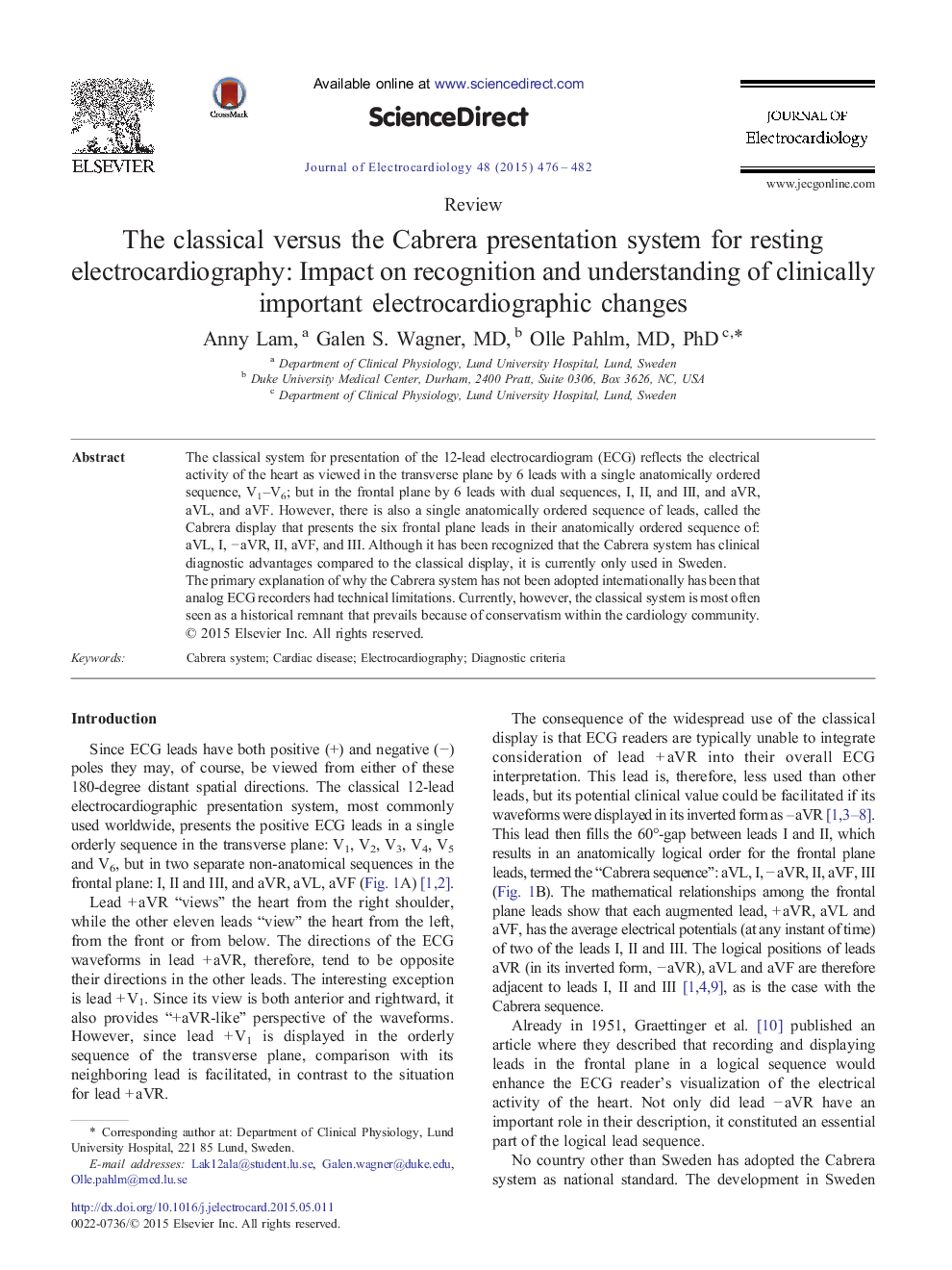| Article ID | Journal | Published Year | Pages | File Type |
|---|---|---|---|---|
| 5986241 | Journal of Electrocardiology | 2015 | 7 Pages |
â¢The purpose is to acknowledge the differences between the two presentation systems of the ECG leads.â¢The Cabrera system has been the standard presentation system of the ECG leads in Sweden since 1979.â¢Lead + aVR (â 150°) is inverted to lead â aVR (30°) in the Cabrera system.â¢The Cabrera system presents the electrical activity of the heart through the limb leads anatomically.â¢The calculation of the electrical axis is faster and more accurate with the Cabrera system.
The classical system for presentation of the 12-lead electrocardiogram (ECG) reflects the electrical activity of the heart as viewed in the transverse plane by 6 leads with a single anatomically ordered sequence, V1-V6; but in the frontal plane by 6 leads with dual sequences, I, II, and III, and aVR, aVL, and aVF. However, there is also a single anatomically ordered sequence of leads, called the Cabrera display that presents the six frontal plane leads in their anatomically ordered sequence of: aVL, I, â aVR, II, aVF, and III. Although it has been recognized that the Cabrera system has clinical diagnostic advantages compared to the classical display, it is currently only used in Sweden.The primary explanation of why the Cabrera system has not been adopted internationally has been that analog ECG recorders had technical limitations. Currently, however, the classical system is most often seen as a historical remnant that prevails because of conservatism within the cardiology community.
